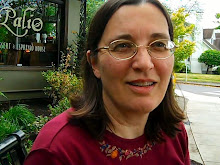Scene analysis using Story
My next Story exercise (more about the short story I was working on yesterday): doing an in-depth analysis of the scene structure. I found that the story falls into three discrete scenes, focusing on the three levels of antagonism I talked about yesterday.
Ask who drives the scene? Who takes the primary action; who reacts?
Then divide the scenes into beats and analyze the subtext. The subtext is the characters' unspoken desires that are more present and more real than the spoken desires. Summarize the action and dialog and at each point tell what the character is doing. Put it into an -ing form, to get the verb to the forefront and focus on the present action.
I make some discoveries that will add to the texture of the story: first, the characters are traveling someplace by car. I observed that in the first part of the scene, one character is "driving" the scene and driving the car. OK. Then, in the second part of the scene, the other character, my teen-aged protagonist, is driving the scene--why not have her drive the car as well? It makes perfect sense structurally; it makes more more active in the story, even though it's a story about her getting eaten by sharks; and it's funny.
The other thing I noticed was that in their verbal dueling, I found myself using tennis metaphors. I had had the protagonist mention that she played soccer. It fits the character better to have her play tennis, and it fits the feeling of their conversation better.
Both details are inconsequential little things on one level, but it's the inconsequential little things that give color and texture to the narrative.
Now I'm doing the same analysis to the second scene, which has always been the weakest part of the story.

No comments:
Post a Comment